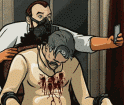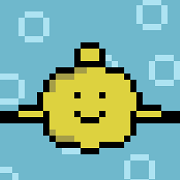|
Kashuno posted:Do you folks feel like your game has some fundamental broken pieces if 3-5 players works well, but 2 doesn't work especially great? What isn't working about 2 player?
|
|
|
|

|
| # ? May 17, 2024 14:42 |
|
Kashuno posted:Do you folks feel like your game has some fundamental broken pieces if 3-5 players works well, but 2 doesn't work especially great? Not necessarily? Some games absolutely require a minimum number of players to make sense, and a lot of games are going to be fundamentally different at 2 players vs. 3+.
|
|
|
|
Kashuno posted:Deckbuilders have that idea. You get a bunch of crap then whittle it down to only the b est cards so you can always get the best. As a regular board game, it seems like it would be wonky to get working. I'm not sure where you'd even start. A deckbuilder could possibly work, but I feel it would need some kind of trial by fire to really force the engines to get honed down to a razor-sharp point. Like every few rounds, players need to remove half of their deck from the game or something. Or make them only keep a single hand form it? Make sure there’s plenty of strategies and routes to victory, and really force players to consider what makes their poo poo work. Or go with the family-tree-style thing, and make it so you build two decks in tandem, and keep half the cards of each at some point to make one deck that’s a combination of the other two? ehh, decks probably wouldn’t work for this, it’d need to be something simpler that wouldn’t take so much time to dig through and decide on.
|
|
|
|
Anniversary posted:What isn't working about 2 player? So the game in question is a worker placement game with player combat. Basically gladiators have a number of servants they can assign in order to strengthen the gladiators for combat (increase hp/craft weapons and armor/etc), and during the second phase of the turn all gladiators enter the arena and do combat with each other. Those who survive gain a victory point per player who dies, and the players who die gain an extra servant for subsequent turns. In practice, 3-5 players has worked very well with a lot of chaos between how to strengthen your gladiator, who to attack in combat, etc. In 2 player games, there are more situations where neither player dies in combat due to a lack of resources on the part of the players to break through what each player has built up.
|
|
|
|
Kashuno posted:So the game in question is a worker placement game with player combat. Basically gladiators have a number of servants they can assign in order to strengthen the gladiators for combat (increase hp/craft weapons and armor/etc), and during the second phase of the turn all gladiators enter the arena and do combat with each other. Those who survive gain a victory point per player who dies, and the players who die gain an extra servant for subsequent turns. I’m a proponent of just saying “gently caress X player mode” if needed. If 2 player mode isn’t working, but the rest of the game is solid, I’d probably just tweak the rules to make it so 2 player isn’t even an option for players, and just label the game for 3-5 players. Probably will come out a lot more elegantly than whatever you’ll do to the rules to try and make 2 player as smooth as 3-5. That being said, 2 players not working COULD be a result of some (possibly quite large) problems in the underlying systems of the game. Think about what causes 2 players to not work, then think about what causes THAT to occur. Then keep thinking about “why does this happen?” over and over until you come across the root of the problem. The answer may very well be “the fundamental core of the system breaks 2 player mode” and then you have to decide what’s important to the game and what will ultimately make the game as good as it can be.
|
|
|
|
Kashuno posted:So the game in question is a worker placement game with player combat. Basically gladiators have a number of servants they can assign in order to strengthen the gladiators for combat (increase hp/craft weapons and armor/etc), and during the second phase of the turn all gladiators enter the arena and do combat with each other. Those who survive gain a victory point per player who dies, and the players who die gain an extra servant for subsequent turns. As Straight White Shark mentioned, it might just be that your game needs multiple players to be viable and that's not necessarily a bad thing - especially if a dummy player isn't necessary. Alternatively could you make combat randomer so that luck will occasionally break the stalemate? (I'm not a fan of randomness to balance games, but this could maybe work.)
|
|
|
|
So the reason that 2 players hasn't been working has mostly been that if player one places his workers to create weapons, player two can go all in on creating armor. If built properly, the two can effectively cancel each other out if the two players attack each other exclusively. Throw even one more player into the mix and a lot of those possible plays are gone. Those kinds of ties are not only less likely to occur, but even if they do there is now a third person involved who can take advantage of the fact they are both extremely weakened.
|
|
|
|
Double post but a bit of an update. I hosted some testing for the game last night and everyone enjoyed it immensely and said they would be up to play again. I think I am going to accept that 2 player might not work well for this game and just stick with what i have going on p.s.: if anyone would be interested, here is a player friendly copy of the rules Kashuno fucked around with this message at 16:54 on Feb 2, 2017 |
|
|
|
Ugh I've hit a snag in my design for not-Merchant of Venus. I'll post the first page just to give an idea of where I'm headed.quote:
I've got an idea for how I want to tackle every bullet point except movement and map design. In the original 1.0 document the game was board-less with each system being a circular punchout that you create at the start of the game. There were exit points along the circumference that lined up with "gates" (basically multidirectional arrows) that let you move around to other systems. It was possible to exit a system to a gate but being unable to go back the way you came. When I rewrote a chunk of the concepts I settled on using an actual board with predetermined routes. You had movement points, not unlike most games, and spent those at each intersection. It's a solid, tested system but also super boring. While typing this I kind of got the idea for a featureless map with predetermined locations on it, not unlike an 18XX game. Players can invest in star lanes (roads) that you slap on the board to speed up their journey and maybe profit off those roads by charging a toll or something. But one this adds an extra layer of complexity and time onto an already lengthy game and two I won't have room on the board to place all the chits and poo poo a game of this size needs meaning I'll have to go back to the drawing board for the market. For those who don't know, Merchant of Venus is a pick up and deliver game published by Avalon Hill in the 80s and reprinted by FFG. You roll dice to move and assign a die as your "navigation number". Certain points on the board can turn you around or warp you to different parts of the map based on that nav number. I want to abstract unexpectedness of that system but one without the dice (because blugh) but second the interaction with moving can lead to unexpected gains when you can maneuver someplace you didn't expect to reach that turn.
|
|
|
|
Kashuno posted:So the reason that 2 players hasn't been working has mostly been that if player one places his workers to create weapons, player two can go all in on creating armor. If built properly, the two can effectively cancel each other out if the two players attack each other exclusively. Throw even one more player into the mix and a lot of those possible plays are gone. Those kinds of ties are not only less likely to occur, but even if they do there is now a third person involved who can take advantage of the fact they are both extremely weakened. Lots of games with this issue use a ghost player that randomly takes spots to create a psuedo 3rd player. Alternatively what if the available actions were altered every turn to prevent symmetrical attack/defense? Crackbone fucked around with this message at 01:13 on Feb 3, 2017 |
|
|
|
al-azad posted:Ugh I've hit a snag in my design for not-Merchant of Venus. I'll post the first page just to give an idea of where I'm headed. What about tying resources to travel? You could make movement cost good and set prices per lane (or say color code routes and randomize each game with a deck of cards). Or lanes where certain good are prohibited while you carry them?
|
|
|
|
Crackbone posted:What about tying resources to travel? You could make movement cost good and set prices per lane (or say color code routes and randomize each game with a deck of cards). Or lanes where certain good are prohibited while you carry them? Hmmm I will definitely steal that prohibited items bit, yoink. It's actually pulling me more towards the 18XX style of blank map that players create the lanes. Yes, this could work.
|
|
|
|
My niece had a ballet recital the other day and I thought it would make a great theme for a game. Here's what I was thinking so far: Working title: Robot Ballet Players take the roles of robot performers trying out for this year's production of the classic robot ballet, "The Mechanical Monk". However, due to budget cutbacks, each performer has to audition at the same time. Each player gets a small deck of cards and a robot miniature. Play takes place on a 6 x 4 gridded game board called 'The Stage', with each robot starting in a different corner of the board. A deck of malfunction cards and a small pile of parts and spotlight tokens can be placed on the side. First player is the last person who went to the theatre, with the youngest breaking ties. Play progresses over a (to be determined) number of rounds and the player with the most points at the end of the game wins. A round is broken down into two parts: A card phase and a movement phase. The card phase begins with all players drawing four cards from their respective decks. Each player then chooses one card and places it face down in front of them, discarding the rest of their hand. After all players have chosen a card, the cards are revealed and the Movement Phase begins. Starting with the first player, the players move their robots the number of spaces and direction indicated on the card. Should a robots' movement take them past either of the short sides of the stage, they are placed on the other side and continue their movement due to the advanced portal technology of the future. Robots cannot move through another robot or occupy the same space, so if movement would take a robot through another robot, movement stops in the space adjacent and a parts token is placed underneath each to represent the parts that flew off of them in the collision. After all movement has been resolved, each player shuffles a malfunction card into their deck and the game progresses to the next round. If a player ends their turn on a parts token, they shuffle an additional malfunction card to their deck. If a round ends with two robots next to each other without colliding into them, both players do not add a malfunction card to their deck. The movement cards each have two things printed on them: A number between 1-5 and some text indicating direction(s) of movement. The number on the card is both how many points the card is worth at the end of the game, as well as how many spaces the robot will move during the movement phase. For example, a card might say: 3: Move forward and the robot would move forward three spaces. Other cards may say 2: Rotate ninety degrees, then move forward, or 4: Move forward two spaces, turn ninety degrees, then move forward two spaces. Some of these cards also have an ability that allows the robot to remove parts tokens from the board as it moves through them. If a player runs out of cards in their deck, they shuffle their discard pile into a new draw deck. Malfunction cards represent the brain of the robot going haywire under the pressure and are similar to low value cards. Each malfunction card has a value of 2 or 3 and has movement that is fairly atypical. For example, a malfunction card might say: 3: Move forward one space, then move backwards two spaces. In addition to parts tokens, there are also spotlight tokens. These tokens represent different areas of the stage that the robots think the producers want to see exceptional moves. Three spotlight tokens are placed on the board at the start of the game, with their starting locations chosen by rolling a d4 and a d6. Players match the numbers to a space on the grid and place the token on that spot. They cannot be placed on a space already occupied by another spotlight token or robot. They can, however, share spaces with parts tokens. If a robot ends their turn on one of these spotlight tokens, the robot's player takes the token from the board. Three of these tokens can be on the board at any one time, and when one is taken off the board, players roll for new tokens to be placed before the start of the next round. Each token is worth an additional two points at the end of the game. That's the rough idea for now. I had an idea to try and get players to complete 'sets' of cards to keep them from just slamming down the highest value card each turn, where a set would be a collection of 3 or more cards that share a color. If you play a certain number of them, they are worth additional points. Sorry if this sounds very stream of consciousness, I'm pretty tired but excited about this idea. I'd love any comments and questions. Chip McFuck fucked around with this message at 06:17 on Feb 4, 2017 |
|
|
|
Hi thread! I've been developing a card-and-dice 2-4 player co-op beer-and-pretzel game for a little over a year now in my spare time. In the past month I've cut several videos (mechanics primer, gameplay primer, and a gameplay video) and have showed them around. My LGS owners are heading to a board game convention in New York later this month and will be showing publishers my stuff and getting some contact details for me. I'm getting very excited because I may actually be on the road to turn this hobby in to something real! Once the convention has passed I'd be happy to share my videos - wish me luck!
|
|
|
|
Chip McFuck posted:Robot Ballet
|
|
|
|
So I'm in that design place where I both have no games and three games that I'm working on. I say no games, as I can't really get any of my design ideas to go anywhere. I say three games, because I keep brainstorming / reviewing several game ideas that I had a while ago... which brings me to this first question - anyone know what happened to this?Kerro posted:We settled on a dice and card-based game that draws on a lot of mechanics from games like LotR, Legendary Encounters and others. Players engage monsters and use dice to activate abilities, introducing an element of 'push-your-luck' gameplay since more powerful abilities cost more dice to use and therefore require more specific combinations, whereas less powerful abilities are easier to trigger. Over the course of the game, players can use experience gained from killing monsters to buy more dice or new abilities. Players also have to balance using dice to buy new items and make their characters more powerful, or dealing with the immediate threat in front of them. Because one of the ideas I keep coming back to is revisiting the idea I had for a Darkest Dungeon inspired dice based game - which I feel, other than perhaps theme, Kerro has done amazingly. So I wanted to come up with more of a twist... and I think I have it. Mercilessly stolen from Malifaux, the game uses a deck of playing cards for mechanic resolution. It's still a really rough idea, so I don't know if each player has their own deck or if there's a shared deck for all players, but I'm leaning towards shared deck. The idea for now is that you use card combos to perform attacks against enemies in a boss rush style game. My current conception of the theme is somewhere between dark fantasy / high fantasy / fantasypunk. One reason I'm leaning towards a single deck is that then players can easily share cards (I was thinking of having a draw 4, put 1 up for any player to use system). The deck is an abstract representation of the player's character's endurance. When the deck runs out, and there's no cards to reshuffle, the players lose. So there would be three zones - the deck, the discard (which will be shuffled into a new deck when the current one runs out), and the trash. Enemy attacks primarily move cards from the discard to the trash, player actions can move cards from the trash to the discard, and this management is one of the gimmicks for the game. That said, I think individual decks allows for more nuanced game play, but I don't know if it works as well for a co-op. Perhaps a slight retheme is in order, perhaps instead of being individual heroes, the players are generals of the armies of Good, and the cards represent their forces and their supply line. One thing that really has me worried about this design is the variety in a deck of cards, there's 14 cards per suit, which means matching numbers for abilities is difficult. I'm honestly at a loss of how to resolve this issue and it's why I haven't committed much effort to the idea. Another idea I've been bouncing around is for a zombie survival (unique!) objective-based game which I've mentioned here a long time ago... There's a lot I like about the idea; it feels really puzzle-y, decisions matter, theme fits gameplay. But the theme is trash. Also I suck at designing maps, so I've been avoiding coming back to this for that reason. There's also always this game, which is my design albatross and for that reason alone I'm sure I'll come back to work on it, but for now it's getting as little love as any of my other ideas: Anniversary posted:So I've been working on a relatively simple duel game that utilizes elements of role selection and worker placement as its resolution mechanics for about a year and a half now. Here's the pnp files as well as how to set it up. All feedback appreciated. Chip McFuck posted:Play takes place on a 6 x 4 gridded game board called 'The Stage', with each robot starting in a different corner of the board. Interesting - one question, because of the advanced portal technology, doesn't this mean that the robots start adjacent to one another (as the corners loop around, right?) Balon posted:Hi thread! I've been developing a card-and-dice 2-4 player co-op beer-and-pretzel game for a little over a year now in my spare time. Any more details you feel comfortable sharing now? Or would you rather wait? Seems interesting. I can't really get a great feel for it from the rules, but I might worry that combat feels a little basic?
|
|
|
|
hahaha well poo poo, I've been working on a coop dungeon crawler for a while now and I've juggled around between using 6 dice or a poker deck for action selection. I even had a DD-like positioning system at one point!  I ran into the card numbers issue as well. Honestly, you can crib a little bit more from Malifaux and divide the numbers into Low, Medium and High groups (say, 2-5; 6-10; JQKA) - some playtest groups had no issue with it, others had trouble remembering it. If they have played card games where scoring is obtuse, they seemed to get it way faster. Another alternative is to reduce the cards you actually use to play - from Ace to 5 and from J to K. That lets you play around with color, suit and number combinations plus you can also have abilities that only trigger with a certain card. It reduces the deck size to 32 cards, which is a little bit more manageable. Another possibility is to use a total sum as an activation value: say a very basic ability requires a 5+ to activate - you only need a 2 and 3 to activate it, but you can burn a higher value card if you wish to. A very good action would maybe need a 15+, forcing you to save cards with high numbers if you want to perform it. Or maybe you only need a King, but there are only 4 Kings in the deck, so you better pace yourself. You can also toy around with limited actions - maybe an ability uses 5 cards to trigger it, but that only leaves you two cards free if you have a 7 hand card. And if you can only perform, say, three actions every turn, that means you are limited to basic and/or weak actions that require one card each (or one action that requires two cards) for the rest of your turn. I hope this helps! Azran fucked around with this message at 21:13 on Feb 7, 2017 |
|
|
|
Anniversary posted:Seems interesting. I can't really get a great feel for it from the rules, but I might worry that combat feels a little basic? So strangely enough I had the same concern, but with no idea how to fix it. I decided to leave it as is and do a bit of testing with it, but it actually ended being far more interesting than I expected. It became a lot more of a negotiation phase than a combat phase. Players started negotiating and forming alliances to kill stronger players, backstabbing, trying to choose the best time to lose a round, etc. The mechanics are simple but the options are large which I think is okay. still, i am worried it will end up being samey and wish I could find some way to spice it up
|
|
|
|
Anniversary posted:The deck is an abstract representation of the player's character's endurance. When the deck runs out, and there's no cards to reshuffle, the players lose. So there would be three zones - the deck, the discard (which will be shuffled into a new deck when the current one runs out), and the trash. Enemy attacks primarily move cards from the discard to the trash, player actions can move cards from the trash to the discard, and this management is one of the gimmicks for the game. Fake Edit: After seeing other replies I notice you're trying to use a standard deck of cards. The below might not apply as much since I'm going the full made-up-card route, but I spent enough time typing it that I'll hope it's still inspirational, at least. I'm prototyping something vaguely similar and have been having a lot of fun with it, so first I'll explain part of my setup (it's a little different) then what has and hasn't worked. My game:
What's worked:
What's helped it work:
What I'm concerned about :
|
|
|
|
Hammer Bro. posted:What I'm concerned about : Potential solution: sheets of large-ish blank stickers (maybe some which are meant for envelopes? Cheap to get from any stationery store) combined with Magic commons (I got 100 for free from my local store when I wanted them). If the stickers make it hard to shuffle then sleeve I guess.
|
|
|
|
So right now face cards are wild, aces are low, and this is what my design document primarily looks like:
[1+]: Gain a Focus Token. 2 Focus Tokens: Draw a card. Bough of Navar [10]: Heal 4. If this was a natural 10, draw a card. Sword [5]: Deal 5 Damage. [6+]: Deal 4 Damage. If the card is red, Heal 1. Shield [X]=[X]: Cancel an attack. If the cards are the same color, draw a card. If the cards are the same suit, take 2 damage. Dagger Odd: Deal 4 Damage. If the card is a Diamond, gain a Focus token. Staff [2]: Deal 4 Damage. Gain a Focus Token. [Even]: Deal 4 Damage. If you used a black card, gain a Focus Token. If you used a club, deal +1 Damage. Hammer [6+]: Deal 4 Damage. [9]: Deal 6 Damage. If you used a club, deal +2 Damage. If you used a red card, take 1 damage. I think the biggest problem for this for now is that it needs more things to fill in the gaps. As the best thing to do with most low numbers is to turn them into Focus. For now I'm scaling the idea back to be PvP for simplicity. Because I think once I get a feel for that it will be easier to design more compelling mechanics beyond just the 'do X if its of a certain suit' type stuff. Oh yeah, deck -> discard. Damage moves cards from your discard to your trash (or if there are no cards in your discard, moves them straight from your deck.) Healing moves cards from your trash to your discard. When you run out of cards in your deck, shuffle you discard into a new deck. If you ever try, and fail, to trash a card you lose. I'm tempted by the sum type design, but I think treating the design space as being 'what if you rolled a d10' should work decently, and the fact that 3/13 are wild means that it should be a lot more flexible to do what you want than might be initially apparent? Maybe? Now this is curious. I'd be interested in hearing more if you're inclined to share. I'm a huge fan of the loose piece of paper in a sleeve with a playing card strategy. I think stickers would be much better, but have never gone through the hassle of figuring out if my printer could handle them.
|
|
|
|
Dancer posted:Potential solution: sheets of large-ish blank stickers (maybe some which are meant for envelopes? Cheap to get from any stationery store) combined with Magic commons (I got 100 for free from my local store when I wanted them). If the stickers make it hard to shuffle then sleeve I guess. Or just sleeve a couple of decks of playing cards or magic commons, then slide the printed paper in the front of the sleeve. You can then easily change stuff around or whatever. I used to do this when proxying magic decks. I suspect for mature prototypes the sticker approach would be better, but more hassle.
|
|
|
|
Yeah I can vouch for printing stuff into card sleeves, backed by actual cards. Pretty easy to do, and they play very nicely.
|
|
|
|
Anniversary posted:Now this is curious. I'd be interested in hearing more if you're inclined to share. Well, this took way too long to produce, but I think it captures the spirit of the game. Beware o' table-breakage; you may have to right-click and go to "View Image" if the expanded version isn't wide enough.  Dancer posted:Potential solution: sheets of large-ish blank stickers (maybe some which are meant for envelopes? Cheap to get from any stationery store) combined with Magic commons (I got 100 for free from my local store when I wanted them). If the stickers make it hard to shuffle then sleeve I guess. It was actually pretty cheap to get a bunch of blank cards off Amazon. Then I just write something very generic on them for early playtests (A, B, etc) and slightly more specific for later playtests (Move, Dodge, etc). But digital makes it so dang easy.
|
|
|
|
Had a bit of a flight of inspiration. Came up with a system I'm tentatively calling 'For Glory' because I'm wearing my inspiration on my sleeve. Its a Brawling Card Game (so it might just be a make numbers go down simulator, I'll have to see how it feels in testing). You pick a character (currently either Scoundrel or Dreadnought) and fight to the death. To do so you use Light and Heavy Attacks. Light Attacks don't use much Stamina or deal much Damage. Heavy Attacks are more intensive in terms of Stamina but more efficient in terms of damage. Some Attacks also have Defensive Abilities: either a Block, Dodge, or Parry built in. Blocks cancel Light Attacks. Dodges cancel Heavy Attacks. Parries are a little weirder, they cancel an attack that was preceded by the same type of attack (so if you use two Light attacks in a row you can be parried on the second one). At the start of the game you pick two of your five actions from your hand (4 attacks and a Rest action) and put them facedown in front of you. The one on the right is your active action, the one on the left is your readied action. You simultaneously reveal your active actions, pay costs (failure to pay a cost cancels an action), resolve Defensive abilities simultaneously (which might cancel one or both players actions), then resolve the non-cancelled attacks simultaneously - returning the active action to your hand at the end of this process. Then you move your readied action to the active location, place a new readied action (which can be the just resolved Active action), and start a new round. Some actions have a Chain ability. When an action with a Chain ability resolves, you may reveal your readied action. If it has the name indicated by the chain ability, you may immediately resolve it (timing wise the originator action is already resolved, so Defensive abilities on Chained actions can only affect other Chained actions). You must still pay all the costs of a Chained action. As an example, here's one of the two classes I've brainstormed so far: Scoundrel Stamina 8 Health 40 Light Attacks Knife Twist 2 Stamina 4 Damage Stabbing Spree 2 Stamina 3 Damage Block Chain Knife Twist Sudden Strike 1 Stamina 2 Damage Dodge Heavy Attack Blackjack 4 Stamina 3 Damage Chain ANY (This attack can chain into any action.) Rest Breathe NO COST Gain 4 Stamina. If this action is cancelled, gain 2 Stamina. When this action is put into your hand, return your readied action to your hand and replace it with an action from your hand. (This can be the same action, this action, or any other action in hand.) Hammer Bro. posted:Well, this took way too long to produce, but I think it captures the spirit of the game. Beware o' table-breakage; you may have to right-click and go to "View Image" if the expanded version isn't wide enough. Interesting. My first thought is it seems like some sort of fusion of Mage Knight and KD:M inspirations wise? My one worry would be that it seems that it would be very brain burn-y, especially if you have to optimize all of the enemies turns. Has this been a problem at all during playtesting?
|
|
|
|
I just playtested a light dungeon crawler game that was basically tailored from the get-go for my group of friends. Every player uses a standard Poker deck that doubles as their action selection mechanism and their health pool. The problem is the following - assigning skills to cards. I had this issue where assigning a certain use to every type of card was... clumsy (too many possible options generated information overload) while tackling the issue with a more gradual approach (5 starting skills aside from their basic skills, each tied to a certain card type - and every player slowly gains more) felt like way too many cards were pretty much useless for anything but basic actions (which use any card) half of the time. Any thoughts?
|
|
|
|
Anniversary posted:Interesting. My first thought is it seems like some sort of fusion of Mage Knight and KD:M inspirations wise? I've played the old Mage Knight but not the recent one. I had a prototype from a few years back which was based on the idea of Dominion + Catan; it was a bit bland. KD:M came out and I read enough reviews to think: I can do better. And in my estimation, I have. There's a pretty simple default AI for all monsters that I as a player have had no problem operating. I have yet to hands-off playtest it, but I know a good analysis paralysis guy I can throw it at -- if he can handle it, then there won't be a problem. Azran posted:Any thoughts? I'm assuming you had a lookup sheet explaining the action of each card? Though it's a large hassle especially early on, some people are helped immensely by having the proper words printed on the card. If you haven't seen it from earlier in the thread, nanDECK is pretty good for printing up custom cards.
|
|
|
|
Yeah, I had a lookup sheet. I think using a card for every ability you have made it easier to parse. I actually have NanDeck, I'm just absolutely awful at any kind of coding so I never really toyed around with it.
|
|
|
|
So, it's come time to submit my game to a local board game design competition and it's looking pretty pretty good, I think. Working with a graphic designer I know, we managed to fit everything into a small box, by putting the board onto a series of cards:  and the rules into a pair of little folding booklets: rules (side 1)  rules (side 2)  card anatomy (side 1)  card anatomy (side 2)  The cards themselves are looking pretty nice too. We've gone from this:  to this:    (the white lines are an artifact that show up on-screen, but not in print) There is still a fair amount of work that still needs to be done on the game, as most of the characters don't have finished art, and the character balance might not hold up in the long run, but I think it will be a pretty good entry into the contest. I really appreciate the encouragement and feedback I received on here early on. However, I feel like I'm now starting to wander into uncharted territory. This contest was giving me a goal to work toward in terms of getting the game as finished as possible, but I'm not so sure about what to do with it going forward. If I were to start looking for a publisher, should I take it to a... gaming convention or something? Is there anything I should definitely avoid doing if I wanted to get it published? For awhile I was interested in throwing it on Tabletop Simulator and selling a PnP version for a couple bucks, but from what I'm reading it seems like many publishers don't like taking stuff that's already been released to the public. One publisher's submission page says they don't even like taking stuff that has a BGG entry... and this doesn't have one, but I was thinking of putting one up. The Game Crafter seemed like a good compromise route, until I saw that neither the quality, nor the prices, are very good.
|
|
|
|
That is true. A lot of publishers aren't interested in things that have already been public because they either A) view it as unsuccessful because if it had been a hit you'd be self publishing or B) they are unlikely to make a profit on it due to people already getting it for cheap and the system already being out there. Have you any interested in self publishing/kickstarting?
|
|
|
|
A Kickstarter might be a good idea in lieu of a publisher, though it looks risky. Some past entrants in this contest have done pretty well on there in the past, others have fallen short of their goals. It's something I'm considering. Any drawback to having a Tabletop Sim version? At best it seems like it could be a way to promote my game/Kickstarter and provide free playtesting, but I could see a publisher having a similar reaction to that as they would a PnP release. I put a really early version on that platform to do some internal testing, but I haven't done anything to promote or draw attention to it.
|
|
|
|
Azran posted:Yeah, I had a lookup sheet. I think using a card for every ability you have made it easier to parse. I actually have NanDeck, I'm just absolutely awful at any kind of coding so I never really toyed around with it. If you want a template that produces cards featured in my really-tall-image a few posts back, I'm using the following baseline: code:code:
|
|
|
|
Prototyping on physical paper was getting cumbersome (and I was running out of coins to use as tokens) so if anyone needs a super bare-bones hexagonal token simulator I made my own: HexBoard You can change the background image, make hexes, move them, rotate their arrow, and change their colors. That's about all it does, but that's all I need it to do. Now I can focus on mocking up some more interesting scenarios.
|
|
|
|
Robo-ballet has been tweaked a little after a small playtest with a couple people. So far, what I've changed is: 1. Board size has been increased to 6x8 2. Players start the game on more central areas instead of at the corners 3. Movement cards don't have points anymore (or at least for now) 4. When robots hit each other, the robot that caused the hit places a parts token underneath itself while the person who got hit places a parts token in any adjacent space I've also been thinking of including some abilities on the movement cards that allow players to move or reorient pieces of scenery around the board that act as obstacles. The worry is with two types of tokens already on the board it might get really cluttered. Congrats on the submission! How did the contest go?
|
|
|
|
I made a thing like nanDECK. Now what I really need is real users, which will help me figure out what improvements I should focus on. Any feedback is welcome.
|
|
|
|
Chip McFuck posted:Congrats on the submission! How did the contest go? It's being judged over a period of about a month, I will find out mid-March how it did. Pretty anxious to find out! As for going further, I think I am probably just going to start out releasing it on PnP/Tabletop Sim, just to get it out there.. but I am taking a bit of a break on working on it for the moment. We really put in a lot of effort in that last week or two of the contest.
|
|
|
|
So, need some thoughts / advice on how to deal damage to enemies in a game I'm designing. Right now the game is setup so there can be up to 6-9 enemies on the board at once, represented by cards. When a player sets their figure on a card, they’re “engaged” with that monster, and will deal damage to and take damage from it. Monster cards can sometimes move, usually only one per round but sometimes two or more. I have a few ideas for how it could work: 1.Monsters have a strict “toughness” number like monsters in magic the gathering. If you can match this number, you kill the monster and it dies immediately. You’d probably take damage equal to the monster’s attack in the process. +no tokens or anything to track health, either a monster is alive or dead +/-might be unintuitive to players unfamiliar with MtG +/-not sure how to deal with players teaming up to kill a monster? they both take damage? they split the damage up between them? -players would never engage in a monster unless they could kill it 2.Monsters have a health value, and attacks deal damage and tick the health down. Any player ending their turn on a space with a monster gets attacked by that monster +easy to understand and intuitive: punch monster for 3 damage, monster loses 3 health. +easy for multiple players to team up against one monster. -TOKENS EVERYWHERE. Or dice, or something for keeping track of the damage being dealt to the monster. Moving these along with monsters could be a pain in the rear end. 3.Combination of the two ideas: monster have a defense that reduces the incoming damage. any damage that makes it through reduces the monster’s health. +easy to understand +/-less fiddly tokens, but still needs tokens -no reason to ever attack a monster if you can’t make it through its defense 4.??? I dunno, any suggestions would be great. CodfishCartographer fucked around with this message at 23:03 on Mar 1, 2017 |
|
|
|
CodfishCartographer posted:+/-might be unintuitive to players unfamiliar with MtG I don't think this a huge concern--gamers will probably have enough familiarity with MtG to grasp it, and non-gamers are probably going to find a simple greater-than comparison easier to grasp than HP tracking. It sounds like the main problem you're facing is that the only reason to engage an enemy is to defeat it. Maybe you could give some/all enemy cards passive effects that can be disabled as long as they're being engaged?
|
|
|
|
CodfishCartographer posted:1.Monsters have a strict “toughness” number like monsters in magic the gathering. If you can match this number, you kill the monster and it dies immediately. You’d probably take damage equal to the monster’s attack in the process. I am working on a similar game and had the same issue. I decided that an unengaged monster poses a threat in ways that don't affect player's HP directly, but players generally want to avoid. Maybe they buff other monsters, or just contribute towards a more general "defeat track". This way, they have a reason to engage even if they can't outright kill it. I later thought about expanding it into a track with the following states: Distracted->Engaged->Cornered->Slain. Might be too granular to have for all enemies though. Since it's not actually HP, and their state will "reset" if the players change targets, you could use the player token itself as a marker: just put it on the appropriate spot on the card that marks it's state.
|
|
|
|

|
| # ? May 17, 2024 14:42 |
|
Thanks for the tips! I hadn’t really considered an effect that gets disabled when engaged. How the game works is that there are 9 slots leading up to a village, with <# of players -1> monsters being added to the open slot(s) farthest from the village at the end of every round, and then whichever monster is closest to the village moves forward 1 slot. If ever a monster gets to the village, or there are no open slots when a monster is added, the players lose. The obvious thing to cancel out when a monster is engaged is to make it so it won’t advance forward at the end of the round. So then you’re essentially trading health for delaying the timer before you lose. Although, the only time to do that would be if you’re JUST about to lose, so I’m not sure. Monsters can also buff other monsters next to them, but I’m not sure if that’s enough of a Big Deal to warrant suffering damage.
|
|
|


























